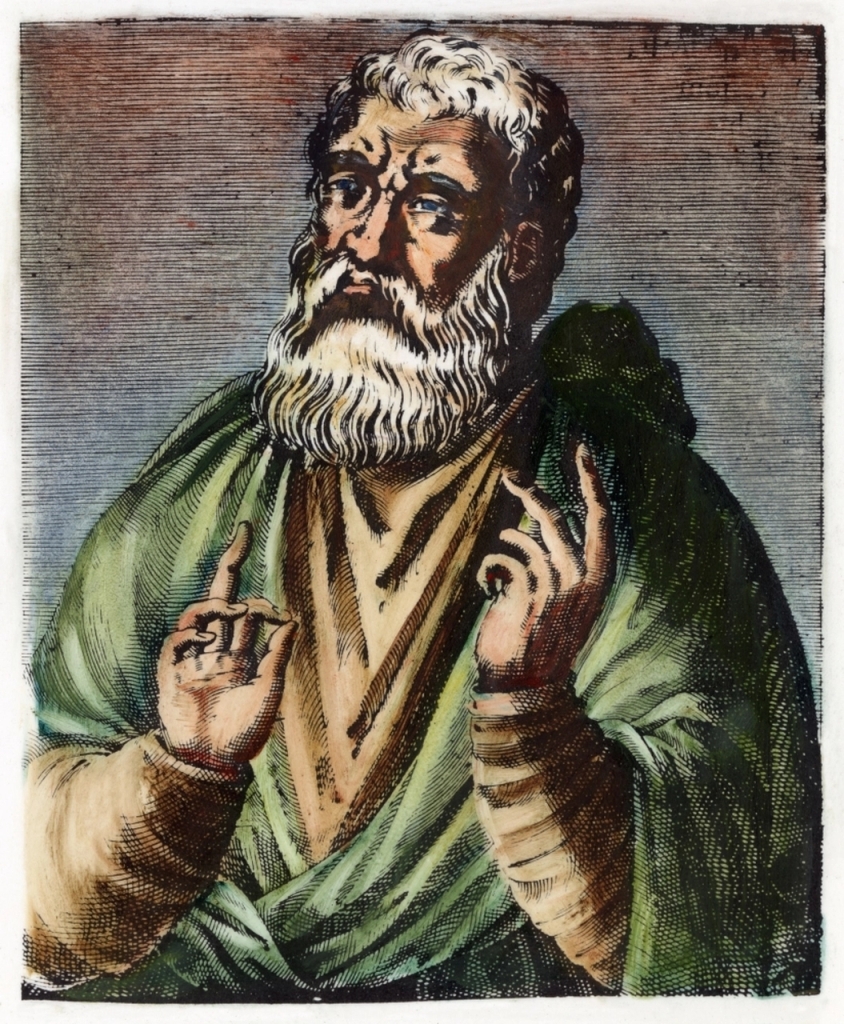Holy Fools
In my last post, which deals with the archetype of the Trickster in pop culture, having been prompted by a discussion of who should host MST3K, I mentioned, in addition to the Trickster, the Holy Fool. I didn’t describe the Holy Fool beyond merely mentioning the term, so I’m using this post as a brief detour to discuss the Fool archetype.
The Holy Fool or Fool is in a sense the Trickster in a religious context. What one might call the spiritual-but-not-religious form of the Holy Fool is the Fool. We’ll distinguish the nuances soon. In any case, the Holy Fool emerges from the very definition of religion. Religion–from the Latin re-ligio, or “binding back” (to the Absolute)–ultimately seeks to connect us to the Absolute, however we may conceive of that (God, Brahman, the Universe, etc.). In short, it seeks to take us beyond the realm of day-to-day existence; it seeks, in short, transcendence. The question is, how does one describe transcendence in the language of the day-to-day world? Mystics–those who claim to have had experience of that transcendent level of reality–are in an even more difficult position. Having experienced the transcendent, how to you convey that experience to those who have not had it? It’s like trying to describe color to the blind or music to the deaf. It is like the man in Plato’s cave who, having experienced the exterior world, is looked at as insane by his fellows still locked in darkness. Not surprisingly, the mystic is indeed often looked at as insane by larger society.
Thus, in a sense the Holy Fool is a psychonaut who either spontaneously or as a result of cultivation receives an experience of the Divine/Absolute which he or she then expresses through seemingly eccentric, strange, or even insane behavior. Such people are a minority even among mystics, most of whom either don’t speak of their experiences at all, or do so through more conventional channels. The Holy Fool, by contrast, either voluntarily or involuntarily, gives himself over completely to the mystic experience and behaves purely in light of this experience, without regard to social norms or even at times conventional morality. Examples of such people abound in the Tibetan tradition of “crazy wisdom” and in the Eastern Orthodox idea of the “Fool for Christ” or yurodivy (юродивый).
The Holy Fool is associated with the inward, spiritual, or esoteric aspects of religion, as opposed to the outward or exoteric aspects. Not surprisingly, then, Holy Fools are often at odds with, if not actively frowned on, by religious authorities. Some traditions, such as Tibetan Buddhism and Eastern Orthodox Christianity, have institutionalized the Holy Fool (to the extent that this is possible); but even in those cultures, holy fools often run afoul of religious authorities and public norms. In this respect, they are very similar to trickster figures. Like tricksters, holy fools are liminal and marginal, often coming from lower-class backgrounds. Also like tricksters, holy fools are associated with humor, blurring of boundaries, and paranormal or miraculous phenomena.
The sexual ambiguity of the Trickster also manifests in holy fools, though in different ways, depending on the religion. Tibetan holy fools are often associated with promiscuity and perversion. In many Native American cultures, holy men are often so-called “two-spirits” (formerly referred to by the term berdache, now considered derogatory), that is, males who take on the dress and social roles of women, often to the point of entering homosexual relationships with otherwise heterosexual men. In India, there is precedent for gender ambiguity among mystics, most notably Ramakrishna, who, during a period of intense devotion to the goddess Kali, dressed and behaved as a woman. In Christian, Jewish, and Islamic contexts, holy fools are more often not only celibate, but have a childlike air of asexuality and/or androgyny. This in particular is something I want to return to in the next post.
Sometimes the religious aspect is less explicit, and we speak of the Fool. Rather than being a mystic mediating the Divine to the mundane, the Fool is childlike and seemingly naive. The Fool seems less eccentric and unhinged than the Holy Fool; rather, he is simple, naive, childlike, and often appears, at least, to be relatively unintelligent. Despite this, the Fool seems to have an air of innocence that trumps the norms of the world. Though he may not be wise, skilled, or intelligent in a worldly way, he always seems to come through the difficulties and vicissitudes of life easily and unscathed. He may be poor or rich, prominent or obscure, but he is unimpressed with worldly status and is unchanged in his personality regardless of his exterior status. Though he is less explicitly a religious figure than the Holy Fool, he nevertheless has an air of spirituality about him, and may inspire faith in the people around him (despite the fact that he may say nothing explicitly about faith or religion). One classic description of the Fool is that of the Tarot.
There is substantial (but not complete) overlap between the Holy Fool and the Fool, and it could be argued that they are different aspects of the same archetype. For purposes of what I’m discussing here, I’ll give two examples to get across what I have in mind. A good example of a Holy Fool from Western culture would be St. Francis of Assisi (who in fact called himself “le Joungleur de Dieu“, which could be translated as “the Clown of God”). For the Fool, I have in mind the fictional character Forrest Gump.
In the pop-cultural context I’m discussing in these posts, the Fool is more pertinent than the Holy Fool, and both are less pertinent than the Trickster. However, I think there are some very important aspects of the Holy Fool/Fool that are indeed operative. The childlikeness, innocence, and asexuality and/or androgyny are factors I particularly want to look at. It’s not a coincidence, I think, that pop-culture tricksters tend to overlap with the Fool and that they’re often marketed to, or very popular with, children.
Next up: Pop culture tricksters.
Part of the series “Mystery Science Theater 3000″
Posted on 03/02/2014, in mythology, religion, society and tagged archetypes, crazy wisdom, fool, Forrest Gump, holy fool, Jungian archetypes, Magical Mystery Tour, psychology, society, sociology, St. Francis of Assisi, tarot, The Beatles, The Fool on the Hill, Tom Hanks, trickster, yurodivy. Bookmark the permalink. 7 Comments.











Pingback: Pop Culture Tricksters | The Chequer-board of Nights and Days
Pingback: Joining MST3K Fandom and a Bit About Joel and Mike | The Chequer-board of Nights and Days
Pingback: Tricksters, Fools, and MST3K | The Chequer-board of Nights and Days
Pingback: Mystery Science Theater 3000: Index | The Chequer-board of Nights and Days
Pingback: MST3K: The Return | The Chequer-board of Nights and Days
Pingback: Simone Weil | The Chequer-board of Nights and Days
Pingback: Sex and Religion! (Now that I have your attention…) | The Chequer-board of Nights and Days